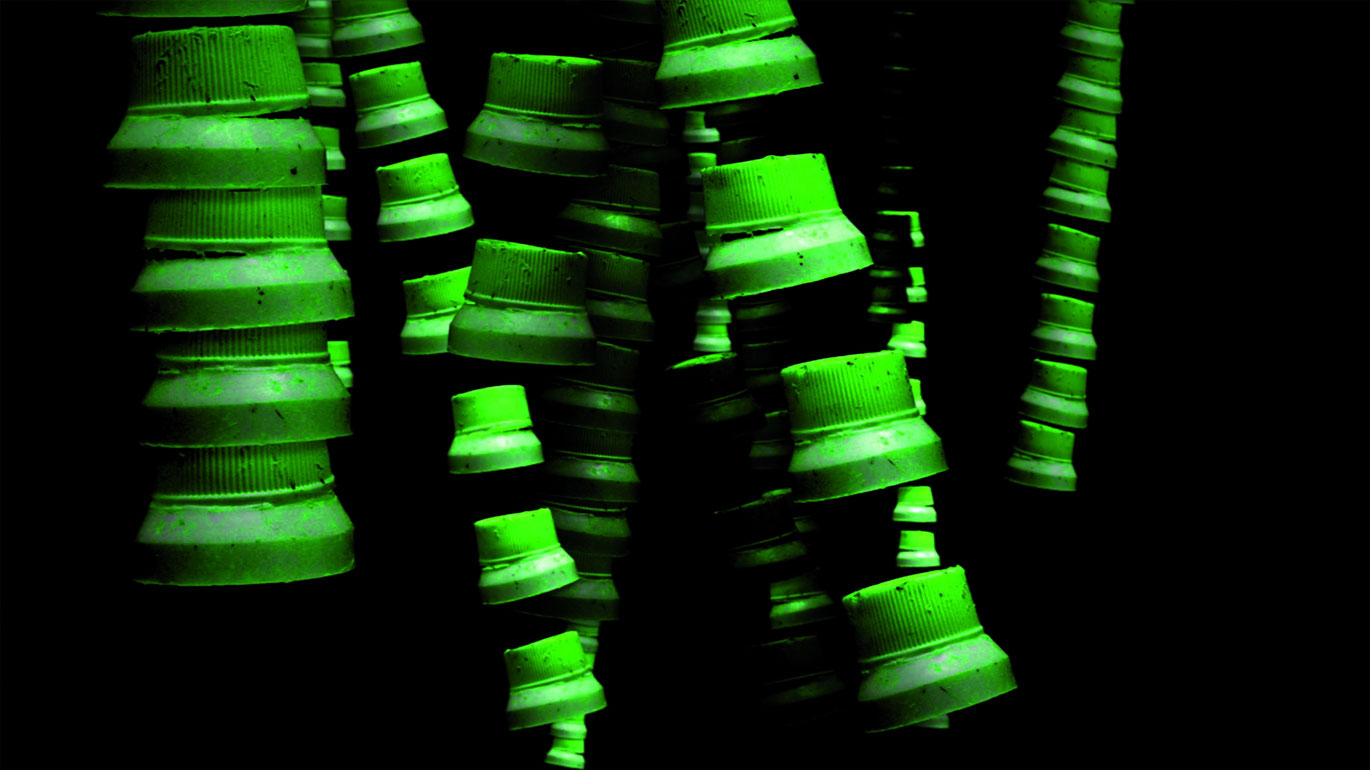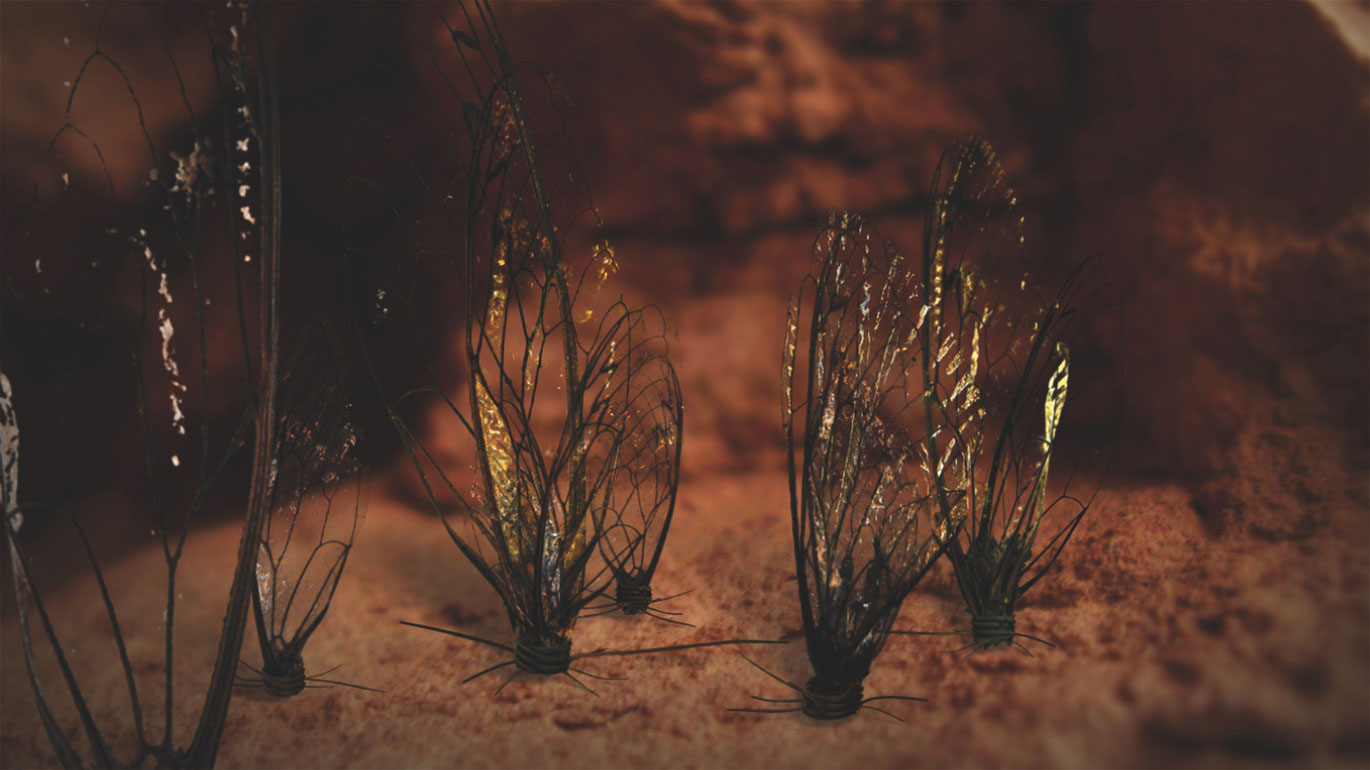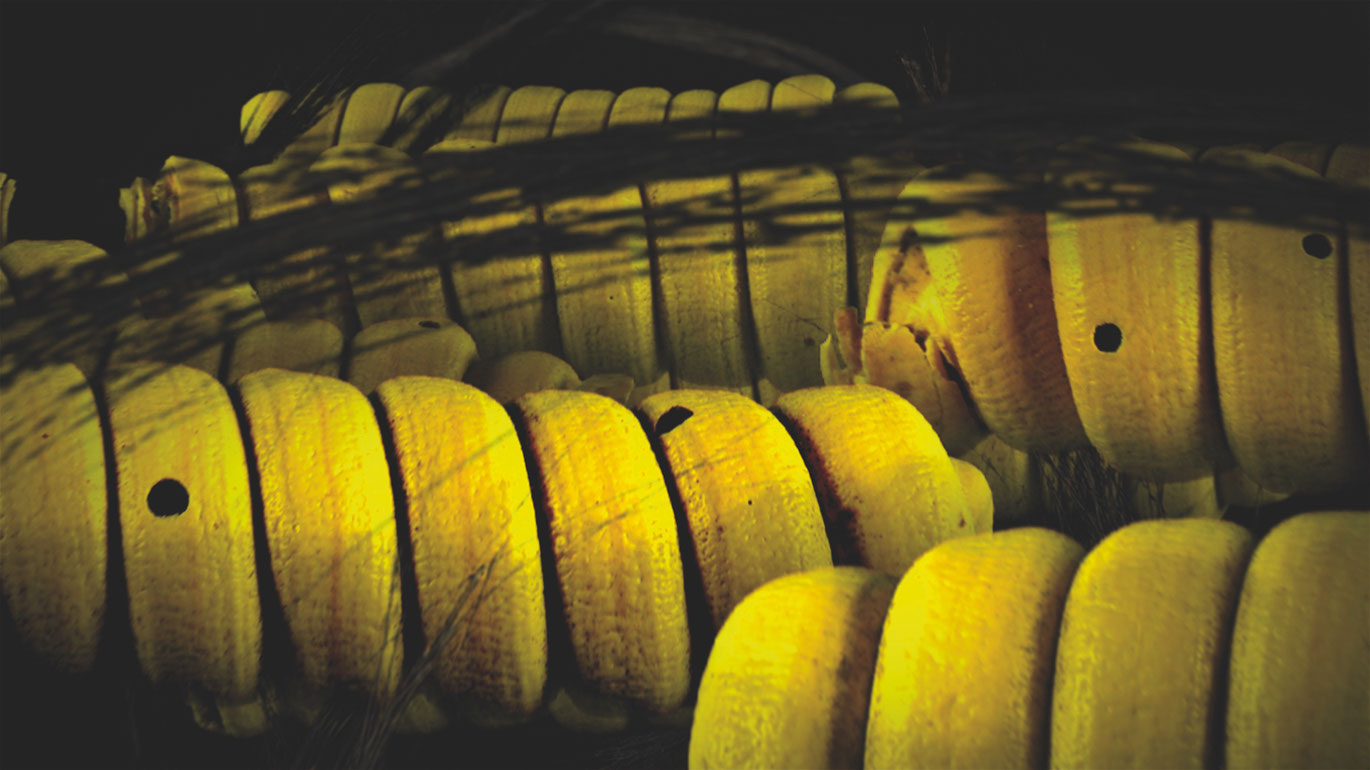Parasit
Fast forward. A camera rushes across Argentina´s stone desert toward a cactus and crashes headfirst through an opening into the plant´s interior. There, a view opens up of an eerie universe. Vibrating insect wings beat, swishing against one another, glistening with a toxic beauty, and wind themselves out from a plastic bottle top. Then they transform into little Sputniks with tender antennas, which rush around clanking in the heart of the cactus until we dive into one of their hollow bodies, and a tin can disappears into the spatial depths of the image.
In Nikki Schuster´s stop–motion–animation Parasit, organic and non–organic, documentary and animation engage in luminuos mutations. Billy Roisz´ experimental, smoldering soundtrack accompanies the unfolding of bizarre microcosms in the depths of trees and crevices. Sizzling, the living combines with the dead, the trash with plants, producing hybrid sculptural organisms with fantastical DNA. In this, the animation has a quasi–parasitical relationship to the documentary, grasping its formations and twisting them onward in nocturnal metamorphoses. Root–like forms proliferate in the dark, transform into long, strands of hair, and wrap themselves with smacking sounds around green, red, and yellow spiral bodies. The hair, a matter, which is equally living and dead, stands emblematically for the synthesis of the natural with the artificial: like the cells of an imaginary body, plastic rings and gear wheels float chaotically, group to bone pieces and eddies, mix together with plastic hangers and pieces of grating. In the end, green caps twist like little UFOs through the image from top to bottom, swing like garlands before a black background before fading away in the dark. Afterwards, the camera pulls hastily out of the nocturnal housing back into daylight–as though having just had a forbidden look into the backside of nature. (Alexandra Seibel)
Translation: Lisa Rosenblatt
Hybrids composed of discarded refuse, insect wings, bones, hair and plant particles germinate within the nooks and crannies of rocks, tree hollows and cactus beds. Creeping, crawling and oozing, these organic-synthetic mutants multiply and evolve, luring the viewer deep into an inner sub-cosmos. In this micro-universe the metamorphosis intensifies, until the gaze is released into the innocent daylight again.
Parasit
2013
Germany, Austria
8 min



